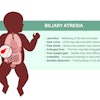Italian researchers say that MRI with a diffusion tensor imaging (DTI) technique appears to be superior to conventional MRI in detecting brain changes that predict future memory decline, according to a study published online on January 6 in Neurology.
The researchers, led by Giovanni Carlesimo, Ph.D., from the University of Rome "Tor Vergata," used DTI to examine changes in the hippocampal region of the brain, which is critical to memory and is associated with Alzheimer's disease (Neurology, January 2010, Vol. 74, pp. 194-200). They found the technique to be a better predictor of memory decline than using MRI with a conventional T1 protocol to measure changes in brain volume.
DTI techniques
The authors noted that previous research has been unsuccessful in establishing a connection between memory function and declines in hippocampal brain volume as measured by MRI. The researchers postulated that DTI-based techniques could be better tools for detecting changes in white and gray matter architecture that could indicate pathology.
One such DTI technique is fractional anisotropy (FA), a quantitative measure of the degree of anisotropic diffusion, while another is mean diffusivity (MD), a quantitative measure of the mean motion of water considered in all directions. The researchers decided to test which of the three techniques -- conventional MRI of brain volume, FA, or MD -- were best in detecting hippocampal changes in healthy individuals receiving a battery of neuropsychological tests.
The initiative started with 145 volunteers recruited from 2005 to 2008 from universities, community recreational centers, hospital personnel, and relatives of outpatients in a memory clinic in Rome. After some patients were excluded, the researchers were left with a final study population of 76 healthy individuals (44 male and 32 female), with a mean age of 50.6 years, ranging from 20 to 80 years old.
All participants received whole-brain, T1-weighted conventional MRI, as well as a diffusion-weighted imaging scan using a 3-tesla MRI system (Magnetom Allegra, Siemens Healthcare, Erlangen, Germany) with a standard head coil.
The researchers minimized the risk of partial-volume artifacts in the coregistered images by including only images with excellent contrast-to-noise, while results of region-of-interest (ROI) segmentation were superimposed on anatomic images and visually inspected by a trained radiologist. In addition, the same radiologist reviewed the validity of image coregistration between DTI images and T1-weighted images of the same subject to exclude misregistration or erroneous ROI identification.
Delayed recall
The results showed that measuring MD of the hippocampus with DTI was the best tool for predicting delayed recall of both verbal and visual-spatial tests in cognitively normal subjects older than 50 years of age. Individuals with high MD values in both the left and right hippocampus registered low scores on the recall after 15 minutes of a list of 15 words.
A trend also was found for participants with high MD values in the left hippocampus producing low performance scores on the reproduction after 20 minutes of a complex visual-spatial figure.
"Among individuals beyond their 50s, those with higher hippocampal MD values were ... less accurate in delayed recall of both the word list and the [visual-spatial] figure," the authors said. "Most importantly, we found that in individuals over 50 years, high MD values in the hippocampal formation predicted loss of function, as reflected by poorer performance on tests of declarative verbal and visual-spatial memory."
The authors went on to say that there was no indication that individuals with smaller hippocampi as measured by volume-based T1 MRI or lower hippocampal FA as measured by DTI performed more poorly on memory tests.
To what extent do the changes measured by DTI predict the future development of diseases like Alzheimer's? The researchers noted that the lower memory performance detected in the study was not actually pathologic, but fell within the lower portion of the normal range on standard memory tests.
Longitudinal studies are required to follow outcomes of the individuals in the study to determine whether the changes measured by DTI reflect a very early stage in the progression to Alzheimer's, or merely the lower range of normal aging individuals who will not convert to dementia, the researchers said.
The study was supported by the Italian Ministry of Health.
By Wayne Forrest
AuntMinnie.com staff writer
January 6, 2010
Related Reading
MRI shows abnormal brain development from prenatal meth exposure, April 15, 2009
Diffusion tensor MR imaging spots subtle changes after mild traumatic brain injury, March 31, 2008
DTI links back pain with structural brain changes, November 29, 2006
MRI spots white-matter changes in movement disorder patients, November 24, 2006
MRI reveals patterns of neurological abnormalities in schizophrenia, April 4, 2006
Copyright © 2010 AuntMinnie.com


















